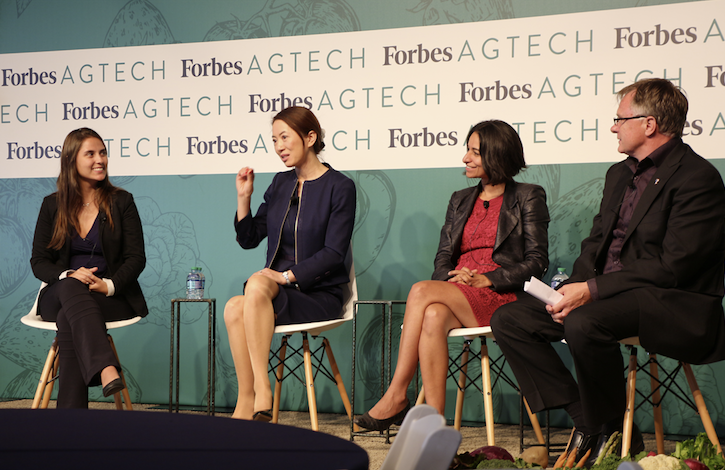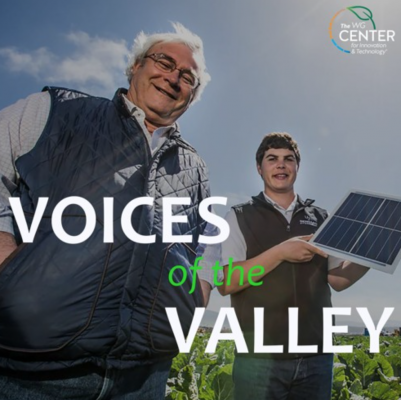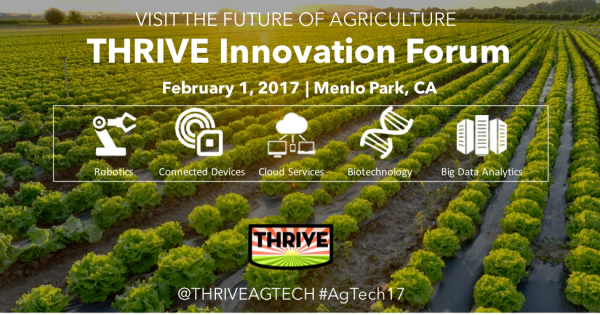Companies
CEOs present sustainable solutions at Forbes AgTech Summit

By Jan Janes
Special to Santa Cruz Tech Beat
July 3, 2017 — Salinas, CA
(Photo above: Entrepreneurs participate in the 2017 Forbes AgTech Summit panel: Innovators + Backer Conversation: Growing Diversity in AgTech. (l-r) Mariana Vasconcelos, CEO Agrosmart, Brazil; Xuemei Germaine, CEO MicroGen Biotech, Ireland; Miku Jha, CEO Agshift, California; John Hartnett, CEO SVG Partners. Credit: Jan Janes Media)
From application and acceptance to 10 weeks of growth
During the first day of the Forbes AgTech Summit in Salinas, SVG Partners CEO John Hartnett introduced three start up founders from the just concluded THRIVE III accelerator as the World Cup of AgTech.
Presenting on a panel Innovators + Backer Conversation: Growing Diversity in AgTech with Hartnett were Xuemei Germaine, CEO of MicroGen Biotech, Ireland; Miku Jha, CEO of AgShift, California; and Mariana Vasconcelos, CEO of Agrosmart, Brazil.
AgShift addresses the complexity of growing food and applying technology to solve the complex challenges of both food scarcity and food wastage. MicroGen Biotech tackles the underreported problem of widespread soil pollution in China using microbiome technology to protect food safety and improve soil fertility, and Agrosmart provides management systems to optimize water and energy using sensors, satellite imaging and forecasts.
On the second day of the Summit, the three CEOs sat down with Santa Cruz Tech Beat to talk about their journey through the THRIVE accelerator and lessons learned along the way.
THRIVE: Ecosystem spans Silicon Valley, Salinas Valley and Forbes Summit
Jan Janes/Tech Beat (JJ/TB): Why did you chose to apply and participate in THRIVE, and how did that benefit your start up?
Xuemei Germaine (XG): When we applied for the program we were looking for something high profile, which is very important for the Chinese market. Our company is based in Ireland, a small start up in a small country. Although I’m native Chinese, with that challenging market in China, it’s all about trust and high technology. If I applied to an accelerator program, it had to be really high profile, so I looked at THRIVE. In China, a huge market, Silicon Valley is very important. A key part of the program is the Forbes AgTech Summit and links to growers in Salinas Valley, known for its agriculture. The Chinese media just reported I’m the first Chinese entrepreneur presenting technology in the Forbes AgTech Summit, which reaffirmed our technology for sustainable solutions to their agriculture problems. We targeted China as our first market because we saw the urgent need for our technology for the heavy metal impact on stressed soils.
Miku Jha (MJ): Even though it’s just an hour away, you would think you have a lot of access to technology in Silicon Valley. But they don’t have access to agriculture ecosystems, access to experts, to people who understand how ag companies work. THRIVE has a rich group of experts and advisors and access to ag companies and corporations. With this program, we knew we would be able to leverage that.
Mariana Vasconcelos (MV): For us, you’re asked for a reference in technology even though our target market is Latin America. The US is the largest market, Latin America is the second largest. We wanted to try out our solutions with farmers here. It’s a different scenario, so how do we get to meet farmers, start engaging and prepared our solution to be global. Here in Salinas you have strong groups, Western Growers, Taylor Farms, Driscoll’s and others known as experts in agtech. Working with and getting endorsements from these groups will help us enter other markets later. THRIVE offers a very good network with many connections. I’m here to learn. My product was built for tropical agriculture, so now I need to learn about farming in the US.
Silicon Valley and Salinas Valley, an hour and worlds apart
JJ/TB: You each have a different solution to specific problems. For your business to scale and succeed, you need to find growers, farmers who clearly articulate ‘these are my problems, this is what I need your help to fix.’ How will you do field trials, find farmers to discuss a set of problems, and how does that inform your business growth?
XG: I was told by many distributors and growers — get it done, develop it as fast as you can, come here for field trials, we absolutely have a huge demand.
MJ: A lot of companies in the valley first build the app, then say people will have an interest to use. Lots of technology coming out of Silicon Valley think building the app is so cool. Agriculture doesn’t work that way, the whole process needs to be reversed. Farmers are using spreadsheets and white boards. Technologists say they give them this beautiful app, but why won’t they use it? It’s an app, much better than a spreadsheet. But the farmers in Marin County, Salinas, Woodland are happy with what works for them, and ask the technologists “What can you do to solve my day to day problems?” Unless you spend time on farms, you don’t realize farmers have no spare time, they make complex decisions on a daily basis. They say farmers don’t understand technology. It’s the other way around. Technologists don’t understand the business of farming. I learned that in three months of driving to farms and talking to growers. When something works for you, there has to be a very strong reason to use another tool instead.
MV: I’m the daughter of farmers, I already understood what their problems were. When we assess what they are doing, we know where to put water, energy, how much they are paying. When I open the product up, they see its simplicity. They know what they have to do in each of the areas. Right now there’s a gap, so many technology sensors delivering too much data. But they do not transform the data information for the farmers, and they don’t understand how to translate it to the farmer’s language.
Pain points and profitability
JJ/TB: How do you move the farmers beyond what seems to be working, so you can show them data sets that will save time and money?
MJ: We launched an app and asked organic farmers, “Do you know how much it really costs to grow one pound of carrots vs. one pound of lettuce?” And they could not answer. A lot of things need to be tracked to get the true unit cost of production. If you don’t know, how are you going to price it and know you really made a profit? Our value proposition to them, when you grow multiple crops, is a system that can track your true cost of production. They grow 30 different crops and do not know which are really profitable. So we changed the conversation, telling them “we will help you make better decisions which improve your profit margins.” Their pain point is that they are not as profitable as bigger farms.
MV: This pain point of profit is so tricky. I got feedback from the farmers that many were not using tools, not because of UX, or other issues, but because they were so afraid to find out. So afraid to suddenly figure out that maybe they’re not profitable. It’s such a psychological pain point they are scared to figure it out. This is a disruption of information so big, and we have to be responsible. It could be environmental conditions, or seed that does perform well in an area. So, to make a change and do something else, we will be by your side, providing information. Which brings knowledge and responsibility.
“Once you have planted, you’re married. To that seed, for that season.”
MJ: Think of it as a pie chart. You can grow the same crops season after season. Or you can change how much of each crop you are growing, or change the land or location, then see how it improves ROI. Now growers can make decisions before they plant.
XG: So AgShift and Agrosmart give farmers a disruptive way to demonstrate improving efficiency using data and systems to give them more profit. With MicroGen Biotech, our solutions market compliance. I’ll give you an example from China. We were running 20 trials, some of them are paid, others nonpaid, because we want to get data from China. The people we are talking to are not thinking about making a profit. Their crops are at risk because of polluted soil, which contaminates the food. They are thinking, “If I don’t do this, the USDA is going to cancel us.” They are given a window to deal with the problem. It is about soil health, food compliance and responsibility. Some of the land can’t be used for a particular crop because of heavy metals, the concentration is so high. Others are in the margins, at risk of losing their production capability. Imagine if it’s in media, that’s not going to be good.
MV: You have to work both sides. We are trying to help them increase yields, get the maximum out of their seeds, crops, but also help them to be sustainable. That’s why we are worried about saving water and being climate resilient. The biggest challenge is to create a mindset where people value both. To preserve the environment with financial and environmental sustainability.
Growing the Salinas / Central Coast agtech hub
JJ/TB: Mentorship in ag and tech, the combination of the two. What can be done to support young people to pursue careers in the fields?
XG: We are some of the role models in early biotech for active CEOs. Women leaders in technology are doing well. Agtech is very new. The young women may think it’s all men’s work, but now we’re there too. We will let them know we can do it, they can do it, and we can do it globally.
MV: My gender didn’t influence my career choice, I just knew the problem. I knew my dad and his friends who were farmers had a problem. Solving problems starts early. One of the barriers was women were not previously exposed to STEM, couldn’t choose computer science, math for a college. We need to expose them to the problems, to science applications, the culture plus technology. As role models, we should continue to dedicate time to mentoring, engaging with girls.
MJ: As a woman with a computer science degree, joining one of the best technology companies in Silicon Valley, I wasn’t welcome. It was a technology battle I had to fight. After a couple of years I started a women in technology initiative. I knew this was going to happen to other women. We started coaching girls their first year in college, telling them not to leave because of the gender barrier. People who have been through that journey need to give back to the younger generation, and the same will happen with agtech. They need to know there are mentors and guides they can count on. Entrepreneurs can offer internships, exposing bright young people to farming, agriculture and technology.
Innovators forge new pathways to success and funding resources
JJ/TB: How did THRIVE make a difference in your company achieving your goals?
MJ: We got a lot of introductions in ag business and corporations. We are now working with Driscoll’s, it happened our second day of the program, a huge step in this early stage of the company. Because of that, we were able to approach other companies and get interest from them. Going through the accelerator has been instrumental, because we are so young and so early. We needed the support structure to validate our business model and access to the right people. On our own we would have gotten there, but it would have taken a lot more time.
There is a lot to connect technology with agriculture. THRIVE is at the forefront, but more initiatives are needed so innovations can happen faster. We need easier access to funding so entrepreneurs can build out these solutions. Just as we need access to research facilities, we need access to funds, to the investment community. Agtech is a different ecosystem, and we need to bridge the funding gap. AgShift will keep a presence in Silicon Valley and establish one arm of the company in the Salinas Valley.
MV: From the first day everyone was engaged, they brought important directors, people to the table willing to collaborate. It would have taken a year to approach each one of them individually, get a conversation with a decision maker. After participating in THRIVE I think Agrosmart has a market fit in the US. That was not on my horizon at all, but it is now. Being from Latin America, a minority in many ways, we didn’t think our solution good enough to compete here. We discovered we are.
We will be establishing a base in Salinas. I’ll return in September to discuss field trials with growers. I never would have chosen Salinas if not for THRIVE. I didn’t even know it was important, but would have just chosen San Francisco.

Miku Jha, CEO AgShift, Xuemei Germaine, CEO MicroGen Biotech, and Mariana Vasconcelos, CEO Agrosmart met and collaborated during THRIVE III, an accelerator program for startups addressing problems at the intersection of agriculture and technology. (Credit: Jan Janes Media)
THRIVE presents awards
At the conclusion of the panel discussion, THRIVE awarded Agrosmart its award for operational excellence, Microgen Biotech its award for sustainability, and Tortuga AgTech its award for innovation.
###
Jan Janes, Communications Director, Web Publisher, Television & Radio Producer, Photojournalist, Social Media Architect, can be reached on LinkedIn.
###
If you wish to republish this article, please follow our Terms of Use.
###








